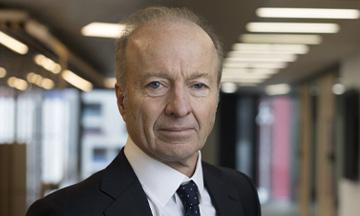This article is an on-site version of our Energy Source newsletter. Premium subscribers can sign up here to get the newsletter delivered every Tuesday and Thursday. Standard subscribers can upgrade to Premium here, or explore all FT newsletters
Hello and welcome back to Energy Source, coming to you from New York, where titans of industry, policymakers and green campaigners are gathering for Climate Week.
My Financial Times colleagues and I have a packed agenda of interviews and events and will do our best to report the highlights of what has become one of the largest annual climate events on the calendar.
We begin today with a scoop: an interview with Jennifer Granholm, the US energy secretary, who told me Donald Trump’s plan to gut the Biden administration’s sweeping climate law would hand China the advantage in a global cleantech race.
“We would be stabbing ourselves because it would be so foolish,” said the former governor of Michigan, who also talks about the LNG pause and Trump’s accusation that President Joe Biden has undermined “US energy independence”.
Our main item today takes us to South Africa, where our correspondent Rob Rose reports on TotalEnergies, which has come under fire for an advertising campaign.
Thanks for reading,
Jamie
TotalEnergies appeals South African greenwashing ruling
TotalEnergies this week will appeal the South African advertising regulator’s ruling that it was “misleading” for the French oil company to tout its commitment to “sustainable development” in a campaign with the country’s national parks.
This case, the first greenwashing dispute heard by South Africa’s Advertising Regulatory Board, a private, self-regulatory body set up to protect consumers, underscores how advertising represents a new front in the war between activists and oil companies over climate change.
Total, however, has faced similar claims before across the globe, including a 2022 case in France brought by Greenpeace and other environmental groups, which accused it of breaching European consumer protection law. The company at the time said the allegations of greenwashing were false.
And it is not just oil companies facing the heat: in August, the UK’s Advertising Standards Authority banned a Virgin Atlantic ad for making “misleading” claims about its first transatlantic flight, which the airline said used “100 per cent sustainable aviation fuel”.
At issue in South Africa is a campaign that Total ran in partnership with the country’s state-run national parks body, SANParks, in which it offered prizes for people who uploaded photos at these parks while tagging Total. It claimed in the ad that “we’re committed to sustainable development and environmental protection”.
Fossil Free South Africa, the non-profit advocacy group that brought the greenwashing complaint to the ARB, argues this was a “completely false and misleading claim” since Total is the 19th-largest emitter of greenhouse gases, according to think-tank InfluenceMap’s Carbon Majors database, and is developing oil and gas projects in Africa.
In its initial argument at the tribunal, Total rejected the claim, saying that “limiting the consequences of global warming and providing energy is a global emergency around which TotalEnergies has defined its strategy”.
It added that this was not an “advertisement”, but rather a “corporate communication” about its social responsibility programme.
But in mid-August, the advertising body ruled that Total’s claim was “misleading”, adding that this did indeed amount to “advertising claims”.
“[Total] has shown that many of its projects are indeed directed at sustainable development. There is no doubt that this is an issue high on [its] priority list. However, it is also no doubt that the core business of [Total] is directly opposed to the issue of sustainable development,” the finding said.
On Thursday, Total will appeal the finding, in which the regulator said South African advertising agencies and marketers should not accept any advertising from the company in which it claimed it was committed to “sustainable development” when it came to the national parks.
“This finding is the first of its kind in South Africa, but only the latest in a series of findings around the world that confirm that fossil fuel companies should not be able to burnish their images by falsely claiming ‘green’ credentials and hiding the real and devastating impact of their businesses,” said Tracey Davies, the executive director of Just Share, a South African shareholder activist non-profit.
But in response to questions from Energy Source this week, Total spokesperson Marion Viry denied that the company was involved in greenwashing its credentials.
“The challenge is to build the energy system of tomorrow, while continuing to supply the energy the world needs today,” she said. “TotalEnergies invested $5bn in renewable and low-carbon energies in 2023 and in 2024.”
This is the second consecutive year in which Total invested more in low-carbon energy than in new oil and gas projects, Viry said, adding that by 2030, the company would be among the top five renewable energy producers.
It is a claim the French company has made repeatedly. After its annual general meeting in May of last year, Total’s chief executive Patrick Pouyanné hit out at the “grumps” who accused the company of greenwashing, saying “we’re convinced of the credibility of our climate transition plan.”
What’s at stake
In South Africa, while Total’s campaign with SANParks is no longer running, the ruling from the advertising authority will still have ramifications for how oil and gas companies market their clean energy efforts in the future.
“What happens in the appeal will be closely watched as it will set a precedent for how companies speak about their environmental commitments,” said Thameena Dhansay, a campaign manager for Fossil Free South Africa.
Dhansay told Energy Source that globally, fossil fuel companies such as Total have shifted their communications strategy as the political temperature over climate change has risen globally.
“From the 1970s, many oil companies chose a strategy of climate denialism. But this has evolved to climate delay — that is, promising to meet a net zero target by 2050. What they’re saying is ‘we will take action, but we can’t do it right now’,” she said.
Fossil Free South Africa said it intended to lodge complaints against other oil and gas companies at the advertising body to ensure they’re held to account for misleading consumers.
“In an ideal world, it wouldn’t be up to a small industry regulator to deal with a weighty issue like fossil fuel industry greenwashing,” said David Le Page, director of the group. “Rather, governments should be taking this more seriously, given the opportunity it presents to mislead consumers and society.”
The South African case illustrates how high the stakes have become for oil and gas companies, which have poured millions into marketing their climate change mitigation efforts.
Gail Schimmel, chief executive of South Africa’s ad board, told Energy Source that her entity was developing a code specifically to deal with greenwashing disputes, which are becoming more common globally.
Schimmel said battles around the world between activists and companies over their green practices had led to “greenhushing” — companies opting not to communicate their climate goals at all for fear of being dragged into legal disputes. “This would obviously be a problem if it led to companies choosing not to invest in green initiatives as a result,” she said. (Rob Rose)
Power Points
-
California sued ExxonMobil, alleging the oil supermajor deceived the public for half a century about the sustainability of its plastic products.
-
The US proposed banning Chinese software and components in vehicles over fears that Beijing could collect data on American drivers and hack internet-connected cars.
-
Western nations have joined forces to break China’s grip on critical minerals, announcing a financing network for projects to provide raw materials.
Energy Source is written and edited by Jamie Smyth, Myles McCormick, Amanda Chu, Tom Wilson and Malcolm Moore, with support from the FT’s global team of reporters. Reach us at energy.source@ft.com and follow us on X at @FTEnergy. Catch up on past editions of the newsletter here.
Recommended newsletters for you
Moral Money — Our unmissable newsletter on socially responsible business, sustainable finance and more. Sign up here
The Climate Graphic: Explained — Understanding the most important climate data of the week. Sign up here













































































































































You must be logged in to post a comment Login